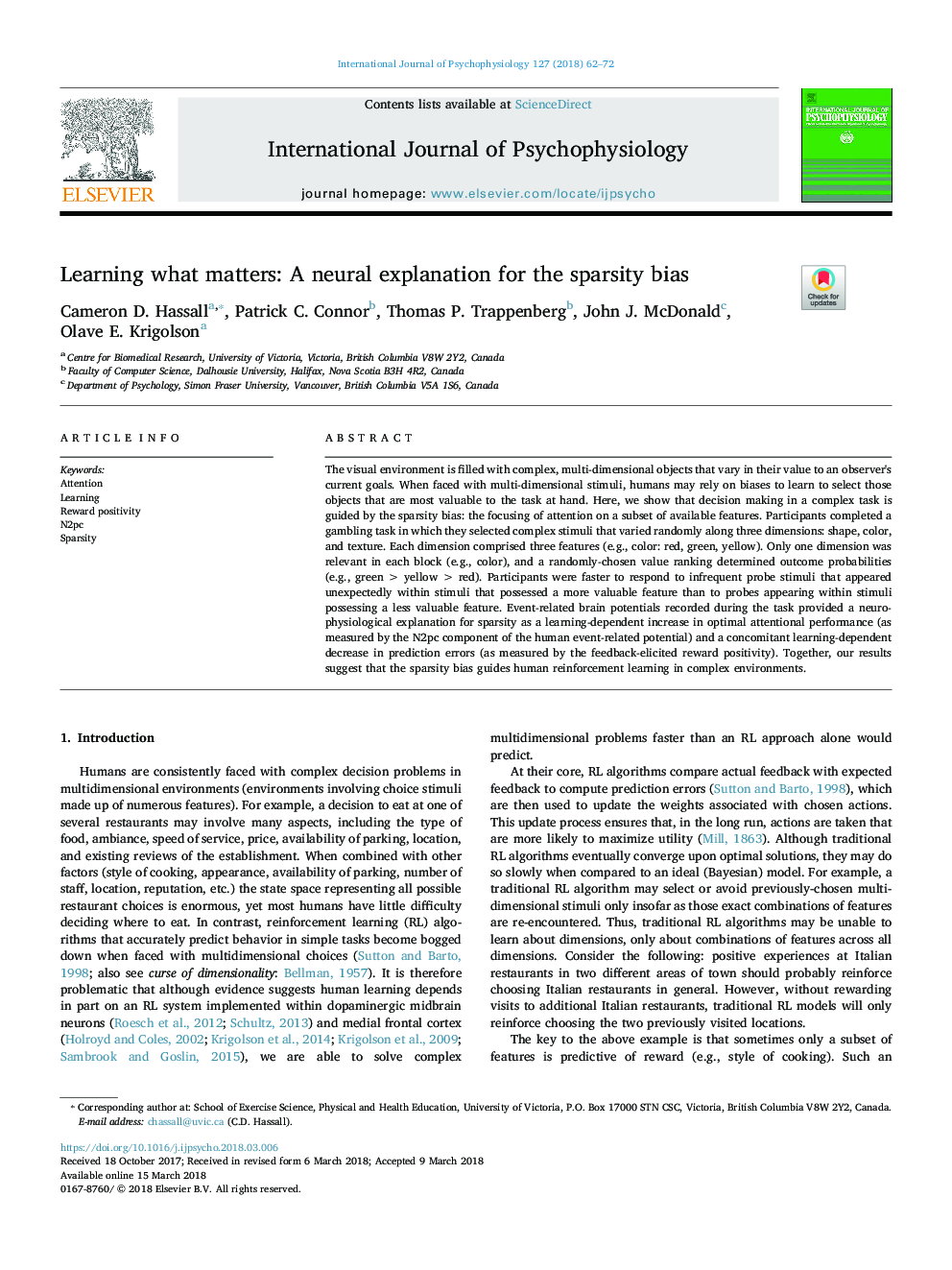| کد مقاله | کد نشریه | سال انتشار | مقاله انگلیسی | نسخه تمام متن |
|---|---|---|---|---|
| 7294850 | 1474369 | 2018 | 11 صفحه PDF | دانلود رایگان |
عنوان انگلیسی مقاله ISI
Learning what matters: A neural explanation for the sparsity bias
ترجمه فارسی عنوان
یادگیری مهم است: توضیح عصبی برای تعصب اسپارتیسی
دانلود مقاله + سفارش ترجمه
دانلود مقاله ISI انگلیسی
رایگان برای ایرانیان
کلمات کلیدی
موضوعات مرتبط
علوم زیستی و بیوفناوری
علم عصب شناسی
علوم اعصاب رفتاری
چکیده انگلیسی
The visual environment is filled with complex, multi-dimensional objects that vary in their value to an observer's current goals. When faced with multi-dimensional stimuli, humans may rely on biases to learn to select those objects that are most valuable to the task at hand. Here, we show that decision making in a complex task is guided by the sparsity bias: the focusing of attention on a subset of available features. Participants completed a gambling task in which they selected complex stimuli that varied randomly along three dimensions: shape, color, and texture. Each dimension comprised three features (e.g., color: red, green, yellow). Only one dimension was relevant in each block (e.g., color), and a randomly-chosen value ranking determined outcome probabilities (e.g., greenâ¯>â¯yellowâ¯>â¯red). Participants were faster to respond to infrequent probe stimuli that appeared unexpectedly within stimuli that possessed a more valuable feature than to probes appearing within stimuli possessing a less valuable feature. Event-related brain potentials recorded during the task provided a neurophysiological explanation for sparsity as a learning-dependent increase in optimal attentional performance (as measured by the N2pc component of the human event-related potential) and a concomitant learning-dependent decrease in prediction errors (as measured by the feedback-elicited reward positivity). Together, our results suggest that the sparsity bias guides human reinforcement learning in complex environments.
ناشر
Database: Elsevier - ScienceDirect (ساینس دایرکت)
Journal: International Journal of Psychophysiology - Volume 127, May 2018, Pages 62-72
Journal: International Journal of Psychophysiology - Volume 127, May 2018, Pages 62-72
نویسندگان
Cameron D. Hassall, Patrick C. Connor, Thomas P. Trappenberg, John J. McDonald, Olave E. Krigolson,
